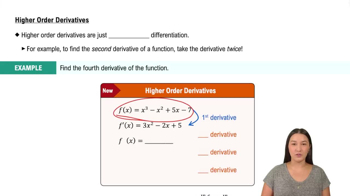Textbook Question
Normal lines parallel to a line Find the normal lines to the curve xy + 2x – y = 0 that are parallel to the line 2x + y = 0.
 Verified step by step guidance
Verified step by step guidance Verified video answer for a similar problem:
Verified video answer for a similar problem:



 5:14m
5:14mMaster Finding The Implicit Derivative with a bite sized video explanation from Patrick
Start learning